金型製作に 3D プリントが貢献できること
従来、業界で最も広く使用されている製造プロセスは、次の 2 つの主要なグループに分類されてきました。減法製造 、主に CNC 機械加工と造形または成形製造に代表されます 、射出成形と投資鋳造に代表されます。両方のグループは今日まで共存しており、どちらを選択するかは、主に作品の複雑さ、選択した素材、または製造量に依存していました.
最近の業界では、前の 2 つと共存するまで、3 番目のグループがギャップを開いています。アディティブ マニュファクチャリングまたは 3D プリンティング。 非常に特殊なケースや非常に特殊なアプリケーションを除いて、現在、サブトラクティブ マニュファクチャリングとアディティブ マニュファクチャリングおよびトレーニングの両方が、多数の一般的な材料をサポートし、非常に複雑な部品を製造することができます。これが、多くの場合、どちらかを選択する基準が主に生産コストに基づいている理由です。
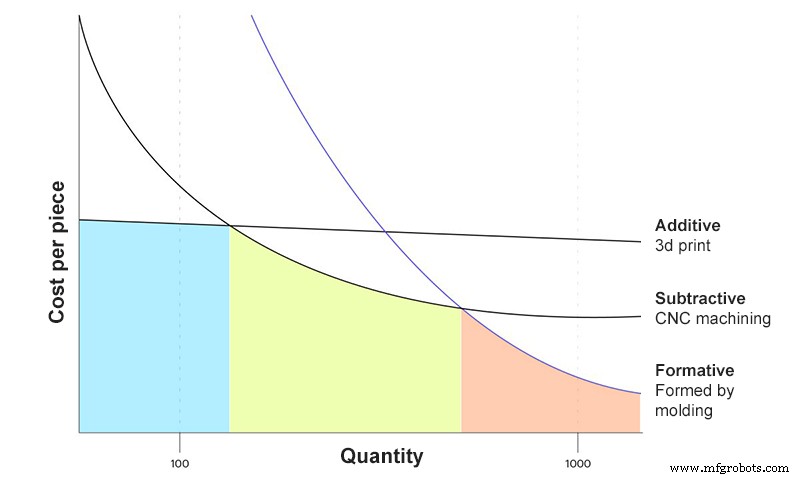
画像 1:生産量に基づく単価曲線。出典:3Dhubs.com
少量または中程度の生産量 、成形は積層造形や CNC 機械加工に太刀打ちできません 、主に設備の減価償却費が高く、高コストの金型が必要なためです。ただし、大量生産に関しては 、成形は誰もが認める王様です。
成形による成形 金型の製造が必要 射出成形、および犠牲ワックス ネガ用 ロストワックス成形の場合、その製造には金型または CNC 法も必要です。これが、成形成形プロセスにおいても CNC 加工がまだ必要である理由です。 、これは伝統的に、再利用可能な金型の製造において最も一般的な方法であったためです.
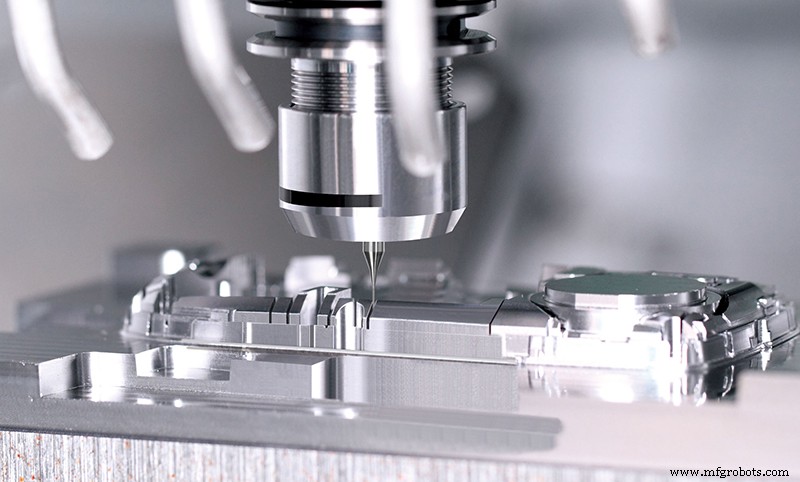
画像 2:射出成形金型。出典:https://commons.wikimedia.org/
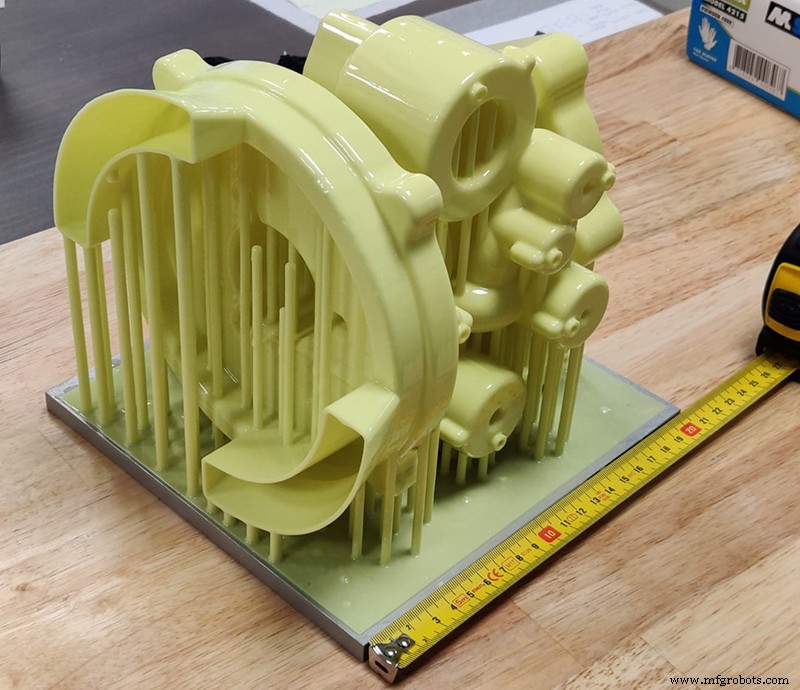
画像 3:ロストワックス成形用ワックスモデル .出典:https://commons.wikimedia.org/
しかし、3D プリントは成形に何をもたらすのでしょうか?
インベストメントキャスティング
ロスト ワックス成形は、犠牲ワックス モデルにセラミック コーティングを適用し、この方法で型を得るためにそれを焼成することで構成されます .これは、その高精度と非常に複雑な形状の製造を可能にするという事実から、鋳鉄の機械部品の製造に広く使用されているプロセスです。
The main drawback of this process is that the mold is destroyed when the part is removed, so it is necessary to create a wax model and a mold for each part.
Video 1:Investment casting process. Source: Niagara Investment Castings
To produce the wax models, a permanent mold is required, generally machined from aluminum using CNC. This means that for low production volumes costs will skyrocket . Another alternative is to use CNC machining to produce the wax models in the case of prototypes or manufacturing of few units, but although the costs are reduced it requires expensive equipment and has certain limitations regarding complex parts.
This is where 3D printing can mean a paradigm shift. On the one hand, the development of new castable materials for both SLA and FDM printing makes it possible to replace traditional wax models with 3D printed polymeric models . This supposes a series of advantages not only at the level of production costs of the models, but also in saving time and agility when introducing new products or correcting defects . Furthermore, the models manufactured by 3D printing have a much higher resistance to wax , minimizing the possibility of breaking them or causing defects during handling.
Today, practically all resin manufacturers have high-quality castable materials such as Formlabs castable resin or Uniz ZWax. This has caused 3D SLA printing to largely replace the use of wax in some sectors such as jewelry, where the use of printers such as Form 3 is common.
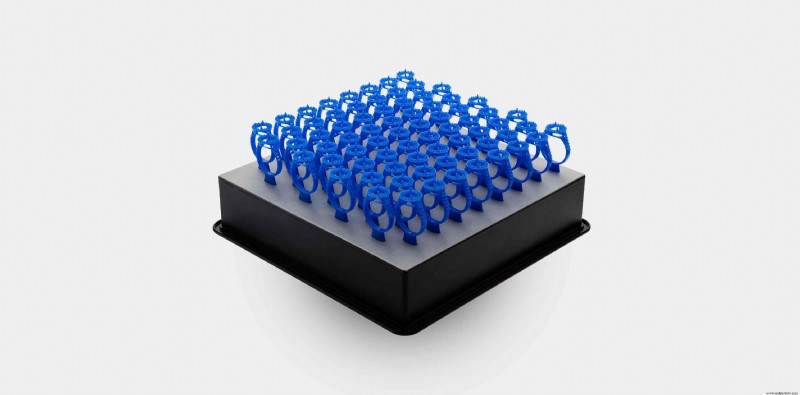
Image 3:3D printed jewelry models for use in investment casting.出典:Formlabs
Despite this, in other sectors such as industry, wax models are still common, perhaps due to the need for large models. Today, the appearance of high-volume 3D SLA printers such as the Form 3L or UniZ zSLTV, as well as the development of castable filaments such as PolyCast, make the size limitation less and less and that the industrial sectors can benefit from the Advantages of substituting 3D models for wax models.
Video 2:Using Polycast Filament. Source:Polymaker.
However, the production of wax models is also governed by the graph in Figure 1, reaching a point where the cost of making wax models using a mold is more profitable than producing the models by 3D printing. And even here, 3D printing has a lot to offer. The low melting temperature of the wax means that traditional aluminum or steel molds can be replaced by 3D printed molds , with the significant savings in economic and temporal costs that this entails.
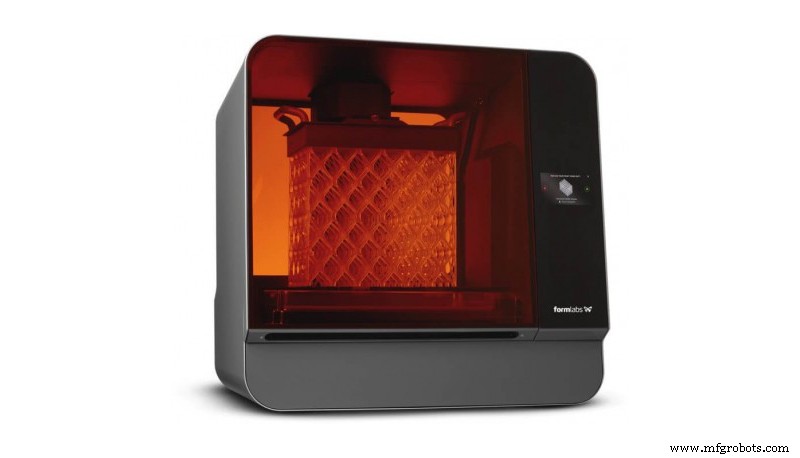
Image 4:Form 3L.出典:Formlabs
Injection molding
Injection molding is a formative manufacturing process in which die-cast plastic is injected into a removable mold and allowed to cool and solidify inside.
Traditionally the use of 3D printing in the manufacture of injection molds has been considered unfeasible. This has been due to two main reasons:the low thermal resistance of the polymers used in 3D printing and the surface roughness inherent in metal SLS 3d printing.
Today 3D printing cannot completely replace CNC-machined molds for injection , however the development of 3D printing materials SLA with high thermal and mechanical resistance has opened the door to the use of 3D printed molds.
An example is Formlabs High Temp resin, capable of withstanding temperatures of almost 300 ºC under a pressure of 0.45 MPa. Its high thermo-mechanical properties , together with the high resolution and excellent surface finish of SLA technology, make it an ideal material for the manufacture of molds.
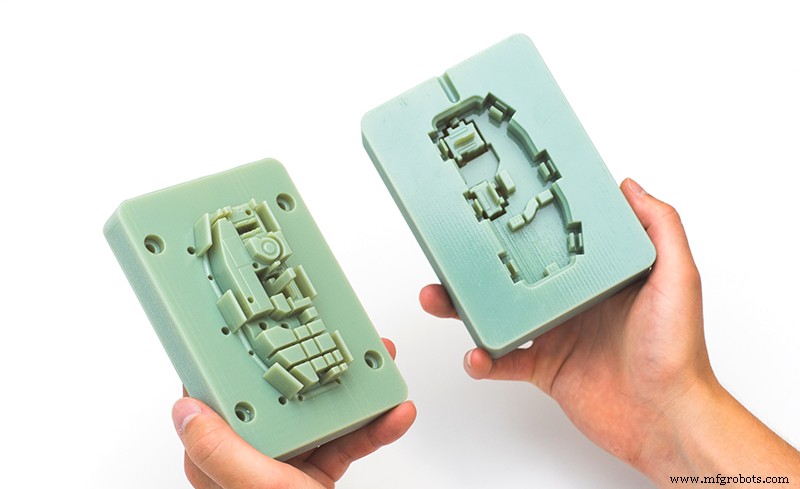
Image 5:Injection mold made by 3D printing SLA. Sourcee:3Dhubs
For this reason 3D printing can be an excellent complement in the production of injection molds. On the one hand it allows the production of economic molds for short series , and on the other hand it helps to verify the design of the metal molds before machining them . The latter is of great importance, since correcting a defect in a machined mold requires grinding processes and even the complete machining of a new mold, which leads to a significant increase in costs and a delay in production.
Silicone and thermoformed molds
Silicone and thermoformed molds are one-piece molds widely used in baking, cooking, jewelry or cosmetics.
It treats of very economic molds and of very simple manufacture. They are flexible or semi-flexible to facilitate demoulding, mainly used with non-melting or low-temperature melting materials such as chocolate, resins, cements, etc.
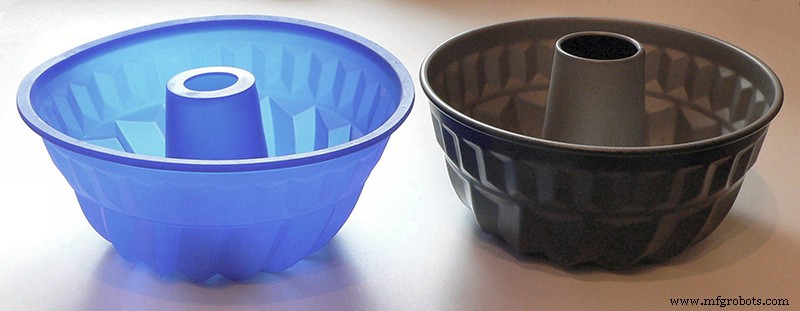
Image 6:Silicon molds. Sourcee:wikipedia
They are perhaps the most common type of mold and that we have all used at some time, for example to make ice cubes, chocolates or muffins.
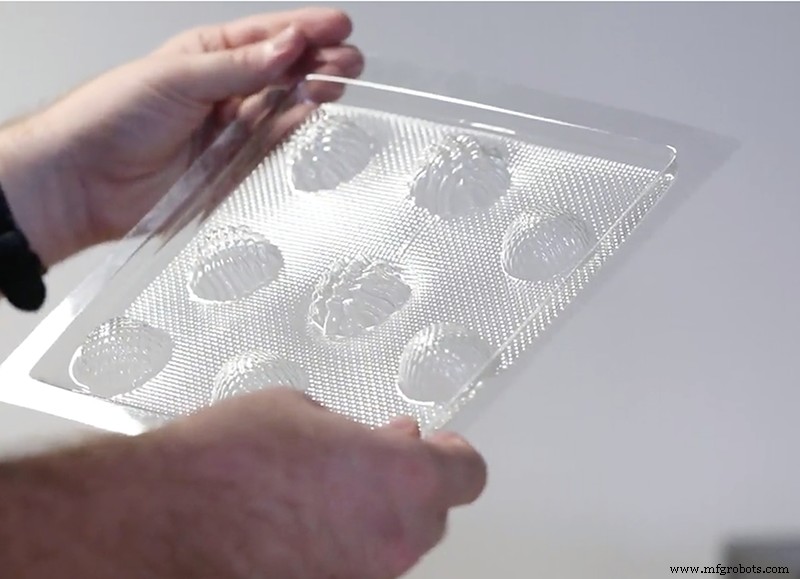
Image 7:Thermoformed mold. Source:Mayku
However, their use is not limited to domestic pastries, but they are widely used in jewelry to make resin jewelry components , or in art and decoration to produce elements in cement and plaster.
Despite the fact that its manufacture is very simple, the only way to make the molds is to have an original model to use as a template , and this is where 3D printing becomes useful.
3D printing provides the ability to obtain custom models, quickly and inexpensively to use as a template in the production of silicone and thermoformed molds. This, together with the availability of inexpensive thermoforming equipment such as the Mayku Formbox , make it possible for small patisseries, jewelery and artisans to produce their own personalized molds simply and inexpensively , giving added value to their products.
Video 3: Thermoformed with Mayku Formbox Source:Mayku
3D printing is not only a useful resource to reduce costs in low production volumes, but even in large productions, where the use of molds is essential, 3D printing has proven to be a very useful technology that can help its manufacture or in some cases even replace them.
3Dプリント



